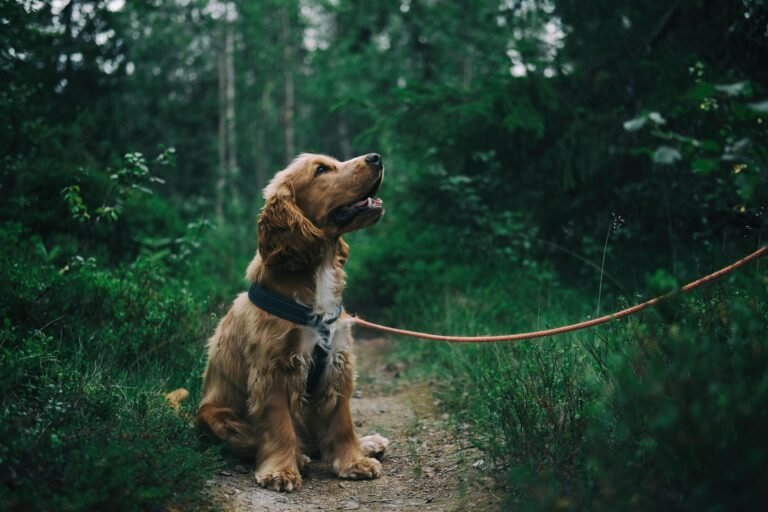Just picture it – you and your four-legged companion exploring rocky terrains and rugged landscapes together. While it’s an exciting adventure, it’s crucial to ensure both of your safety. In this guide, we’ll provide you with important tips on how to navigate rocky terrain with your furry friends, keeping them safe and happy throughout your outdoor expeditions.
Understanding Rocky Terrain
Before you initiate on a hike with your furry companion, it’s important to have a good understanding of the rocky terrain you may encounter. Rocky terrain can vary in difficulty, from small rocks scattered along the trail to large boulders and steep cliffs. Being prepared and knowing how to navigate these obstacles safely will ensure a more enjoyable experience for both you and your dog.
Identifying Potential Hazards
There’s a wide range of potential hazards to look out for when navigating rocky terrain with your dog. Sharp rocks can cause cuts and injuries to your dog’s paws, while loose rocks may pose a tripping hazard. Steep inclines and uneven surfaces can also be challenging for your furry friend to navigate, potentially leading to slips and falls. It’s important to be vigilant and stay alert to these dangers to keep both you and your dog safe.
Factors to Consider Before Heading Out
There are several factors you should consider before heading out on a hike with your dog in rocky terrain. The size and breed of your dog will play a role in how they manage the obstacles. Larger dogs may have an easier time navigating rocky terrain, while smaller dogs may struggle with larger rocks and steep inclines. The age and physical condition of your dog should also be taken into account, as older or less physically fit dogs may have a harder time with challenging terrain.
- Ensure your dog is in good health and physically capable of handling the terrain.
- Bring plenty of water and snacks to keep both you and your dog hydrated and energized throughout the hike.
Preparing Your Dog for Rocky Terrain
While launching on a rocky terrain adventure with your dog can be exhilarating, it’s important to ensure that your furry companion is well-prepared for the challenge ahead. Preparing your dog for rocky terrain involves building endurance and strength, training for balance and agility, and equipping them with the right gear for safety.
Building Endurance and Strength
An important part of preparing your dog for rocky terrain is building their endurance and strength. Regular exercise, such as hiking on varied terrain or swimming, can help improve your dog’s stamina and muscle strength. Gradually increasing the intensity and duration of these activities will better prepare your dog for the demands of rocky terrain.
Training for Balance and Agility
Now, let’s focus on training your dog for balance and agility, which are crucial skills for navigating rocky terrain safely. Incorporating activities like obstacle courses, balance exercises on wobble boards, or walking on uneven surfaces can help improve your dog’s coordination and stability. These exercises will enhance your dog’s ability to maintain balance and react quickly to changes in terrain.
Agility training classes can also be beneficial for enhancing your dog’s agility and responsiveness. These classes typically involve navigating obstacle courses, which can mimic the challenges of rocky terrain such as jumping over hurdles, weaving through poles, and balancing on platforms. Agility training will not only improve your dog’s physical condition but also boost their confidence in tackling different terrains.
Essential Gear and Equipment
Some important gear and equipment to consider for rocky terrain adventures include sturdy hiking boots for your dog to protect their paws from sharp rocks, a well-fitted harness with reflective strips for better control and visibility, and a collapsible water bowl to keep your dog hydrated during the hike.
The right gear not only ensures your dog’s safety and comfort but also makes the rocky terrain adventure more enjoyable for both you and your furry companion.
How to Choose the Right Trail
Researching Trail Conditions and Difficulty
If you’re planning to begin on a hiking adventure with your canine companion, it’s important to research the trail conditions and difficulty level beforehand. This will help you determine if the trail is suitable for both you and your furry friend. Look into factors such as elevation gain, terrain type, and any potential obstacles or hazards along the route.
Considering Your Dog’s Breed and Size
Considering your dog’s breed and size is crucial when choosing a trail. Different dog breeds have varying levels of endurance and agility, so it’s important to select a trail that aligns with your dog’s physical abilities. Larger breeds may struggle on narrow paths or steep inclines, while smaller breeds may find it challenging to navigate rocky terrain. Keep these factors in mind to ensure a safe and enjoyable hiking experience for both you and your dog.
Researching the typical traits and characteristics of your dog’s breed can also help you assess their suitability for specific trails. For example, breeds with short legs may struggle on trails with large rocks or steep sections, while breeds known for their high energy levels may require longer and more challenging hikes to keep them engaged and satisfied.
Tips for Selecting a Trail That’s Right for You and Your Dog
- Choose a trail that matches your fitness level and hiking experience, as well as your dog’s abilities.
- Pick a trail with moderate elevation gain and gentle slopes, especially if your dog is new to hiking or not very agile.
If you’re unsure about the difficulty level of a trail, start with shorter and easier hikes to gauge your dog’s comfort and endurance. As you both gain experience and confidence, you can gradually increase the challenge level. Recognizing your limits and knowing when to turn back is vital to ensure a safe hiking experience for you and your furry companion.
Navigating Rocky Terrain with Your Dog
How to Read the Terrain and Anticipate Hazards
One of the most important aspects of safely navigating rocky terrain with your dog is the ability to read the terrain and anticipate potential hazards. Look for loose rocks, steep drops, and narrow pathways that could pose a risk to you and your furry companion. By scanning the path ahead and choosing the best route, you can avoid dangerous situations and ensure a safe journey for both of you.
Techniques for Safe Passage Over Rocky Surfaces
Passage over rocky surfaces requires some skill and finesse to ensure both you and your dog make it through unscathed. One technique is to take smaller steps to maintain balance and stability on uneven terrain. Additionally, use your hands to help support yourself and guide your dog over challenging sections. By moving slowly and deliberately, you can navigate rocky surfaces with confidence.
It’s also important to encourage your dog to follow your lead and teach them to traverse rocky terrain safely. Start with shorter outings to build their confidence and gradually increase the difficulty of the terrain as they become more comfortable and skilled.
Managing Your Dog’s Energy and Pacing
Overexertion is a common risk when navigating rocky terrain with your dog. It’s crucial to manage their energy levels and pacing to prevent exhaustion and injury. Be mindful of how your dog is coping with the terrain and take regular breaks to allow them to rest and rehydrate. By monitoring their behavior and adjusting your pace accordingly, you can ensure a positive experience for both you and your furry friend.
Your dog’s breed, age, and fitness level will also play a role in how they handle rocky terrain. Some dogs may thrive on challenging hikes, while others may struggle with the physical demands. It’s imperative to tailor your outings to your dog’s individual needs and abilities to keep them safe and happy during your adventures.
Safety Tips for You and Your Dog
Once again, when initiateing on a hike with your canine companion, safety should be your top priority. Here are some imperative tips to help keep both you and your furry friend safe while navigating rocky terrain.
- Always keep your dog on a leash to prevent them from wandering off or getting too close to dangerous edges.
- Be aware of your surroundings and watch out for any loose rocks or steep drops that could pose a risk to you or your dog.
- Ensure that your dog is wearing a well-fitted harness that will allow you to assist them if needed without causing any harm.
What to Do in Case of an Injury or Emergency
For injuries or emergencies on the trail, it’s imperative to remain calm and assess the situation. If your dog is injured, carefully examine them for any wounds or signs of distress. Have a first aid kit on hand with supplies for both you and your dog, including bandages, antiseptic wipes, and tweezers for removing splinters or ticks. If the injury is severe, seek immediate veterinary attention.
How to Prevent Heat Exhaustion and Dehydration
Case your dog shows signs of heat exhaustion or dehydration, such as excessive panting, lethargy, or drooling, it’s crucial to act quickly. Take frequent breaks in shaded areas, offer your dog plenty of water, and avoid hiking during the hottest parts of the day. Consider bringing a collapsible water bowl and portable water to keep your furry friend hydrated throughout the hike.
Staying Alert and Aware of Your Surroundings
Your safety and that of your dog depend on your ability to stay alert and aware of your surroundings. Keep an eye out for any potential risks on the trail, such as loose rocks, slippery surfaces, or wildlife. By remaining vigilant and prepared, you can navigate rocky terrain safely and enjoy a worry-free hike with your furry friend.
Prevent accidents by staying focused and avoiding distractions such as texting or listening to loud music while hiking. Being fully present in the moment will help you react quickly to any unexpected challenges that may arise while on the trail.
Factors to Consider in Different Weather Conditions
After you have mastered the basics of navigating rocky terrain with your canine companion, it is necessary to consider the impact of various weather conditions on your hiking experience. Here are some factors to keep in mind:
- Temperature fluctuations
- Precipitation levels
- Wind speed
Navigating Rocky Terrain in Rain or Snow
One of the biggest challenges you may face while hiking with your dog in rainy or snowy conditions is slippery surfaces. Wet rocks and snow-covered trails can pose a hazard, increasing the risk of slips and falls. It is necessary to slow down and proceed with caution, ensuring both you and your furry friend have secure footing. Additionally, be prepared with the right gear, such as non-slip boots for your dog, to provide extra traction.
How to Protect Your Dog from Extreme Temperatures
From protecting your dog’s paws to ensuring they stay hydrated, there are several measures you can take to safeguard your furry companion from extreme temperatures. Here are some tips:
| In Cold Weather | In Hot Weather |
| Dress your dog in a warm, waterproof coat | Avoid hiking during the hottest part of the day |
| Use paw balm to protect their paws from ice and salt | Keep your dog hydrated with plenty of water breaks |
Adequate protection from extreme temperatures is crucial to ensure your dog’s safety and well-being during your hiking adventures.
Adapting to Changing Weather Conditions
Navigating rocky terrain with your dog becomes more challenging when you encounter changing weather conditions. It is important to be prepared for sudden shifts in temperature, wind, or precipitation. Always check the weather forecast before begining on your hike and pack appropriate gear such as rain jackets or cooling vests for your dog.
It is necessary to stay vigilant and flexible during your hike, adapting to the weather conditions as needed to ensure a safe and enjoyable experience for both you and your canine companion.
To wrap up
So, remember that the safety and well-being of your furry friend are paramount when navigating rocky terrain. By following some simple tips like checking your dog’s paws, bringing plenty of water, using a harness, and staying alert to potential dangers, you can enjoy adventurous hikes together without much hassle. Always prioritize your canine companion’s comfort and safety to ensure a fun and memorable experience for both of you.
FAQ
Q: Why is it important to safely navigate rocky terrain with my canine companion?
A: Safely navigating rocky terrain with your furry friend is important to prevent injuries to both you and your dog. Rough and uneven surfaces can lead to slips, falls, and twisted ankles, which can be dangerous for both you and your pet.
Q: What are some tips for safely navigating rocky terrain with my canine companion?
A: Some tips for safely navigating rocky terrain with your furry friend include using a sturdy leash to maintain control, choosing the right footwear for grip and protection, being aware of your surroundings and potential hazards, and taking frequent breaks to rest and hydrate.
Q: How can I prepare my canine companion for navigating rocky terrain?
A: To prepare your furry friend for navigating rocky terrain, start with short walks on easy trails to build up their strength and endurance. Gradually increase the difficulty of the terrain while monitoring their comfort level. Consider training them to follow basic commands such as “stay” and “come” to ensure their safety on challenging terrain.







